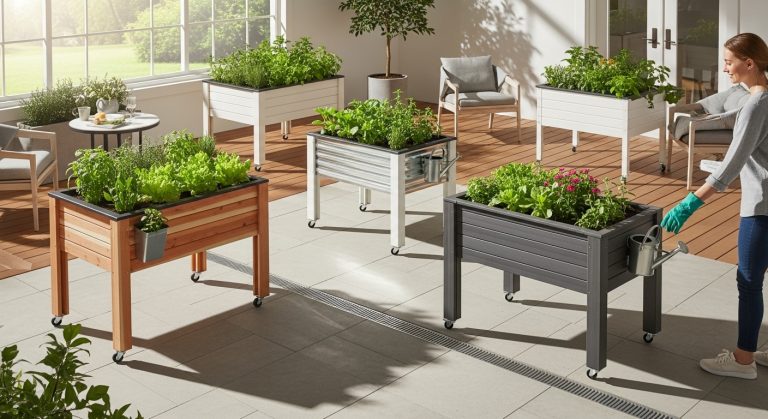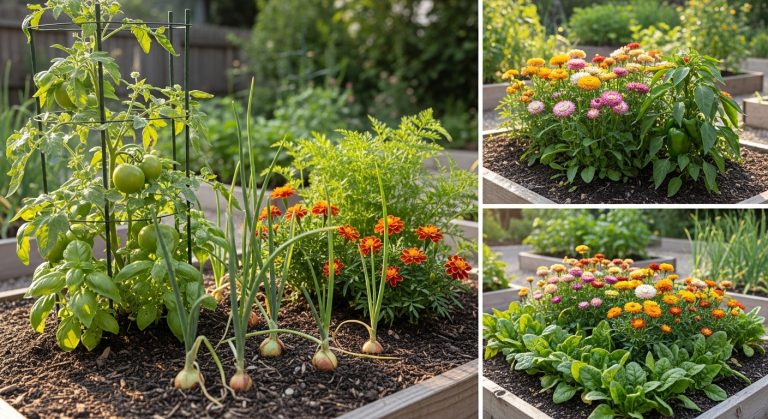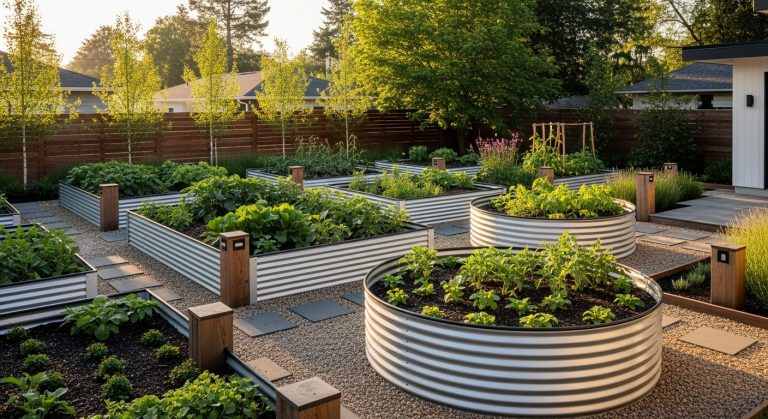Wooden Garden Gazebo Ideas: 15 Stunning Designs to Transform Your Outdoor Space
A wooden garden gazebo is more than a shade structure — it’s a mood, a lifestyle, and an invitation to slow down. There’s something timeless about sitting under a crafted timber frame while sunlight filters through slats and birds chatter in the distance. Whether you picture rustic cedar beams covered in wisteria or a sleek, minimalist retreat with a firepit at the center, a wooden gazebo can completely change how you experience your garden.
What makes gazebos special is their versatility. They can be romantic, architectural, functional, or purely aesthetic. You can use one for dining, lounging, meditating, or simply as a sculptural element anchoring your landscape. The key is choosing the right style, shape, and material to match your garden’s personality — and your own.
Let’s explore 15 wooden garden gazebo ideas that prove how this classic feature can be anything but ordinary.
1. Classic Cedar Pavilion — Timeless and Warm
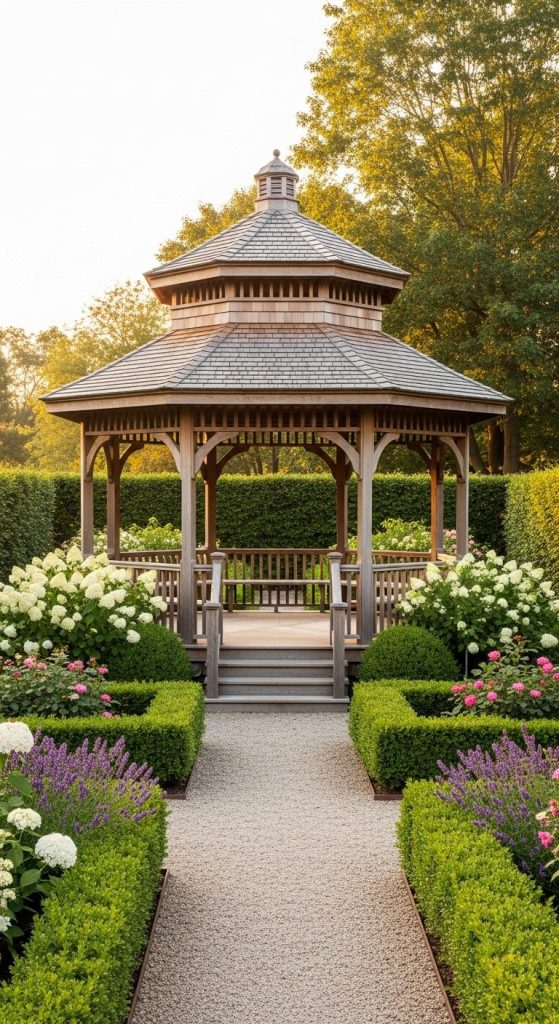
There’s a reason cedar is the go-to wood for outdoor structures. It’s naturally resistant to decay, smells amazing, and has that rich red hue that ages beautifully into silver-grey. A cedar pavilion feels like the heart of a traditional garden — open, airy, and inviting.
Pros:
- Naturally weather-resistant and long-lasting.
- Aromatic oils repel insects.
- Easy to stain or leave natural for a rustic patina.
Cons:
- Higher upfront cost compared to pine.
- Needs occasional sealing to maintain color.
Cedar gazebos exude understated luxury. IMO, nothing beats the scent of warm cedar on a summer evening — it’s nostalgia in architectural form.
2. Japanese-Inspired Gazebo — Serenity in Structure
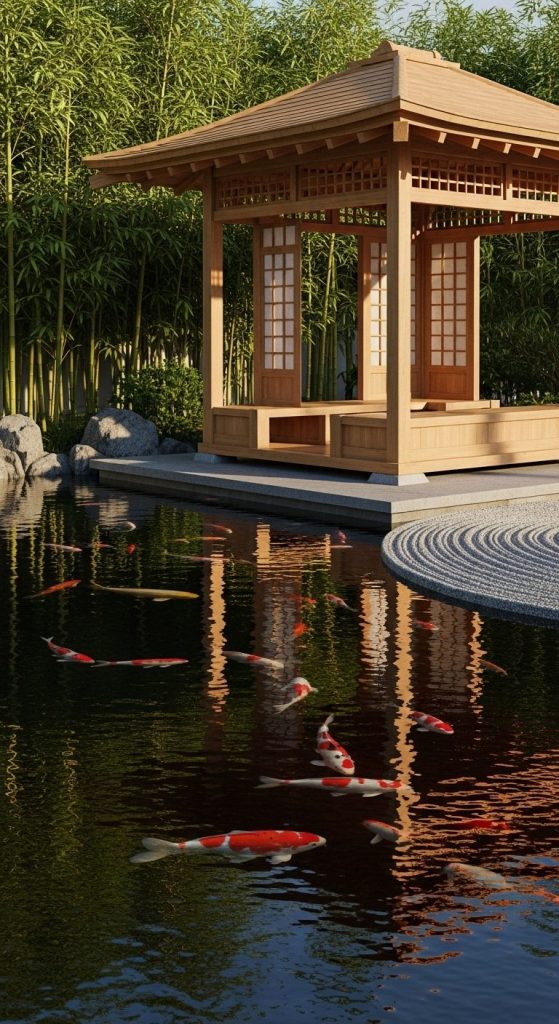
A Japanese-style gazebo blends craftsmanship with calm. Think clean lines, low-pitched roofs, and sliding lattice panels. This style emphasizes balance and harmony, making it perfect near ponds, bamboo groves, or minimalist gardens.
Pros:
- Evokes tranquility and mindfulness.
- Complements zen gardens or koi ponds.
- Works well with natural finishes and stone paths.
Cons:
- Precision design can be pricey.
- Needs careful proportioning to avoid looking out of place.
It’s not just a gazebo — it’s a retreat for the mind. A Japanese wooden gazebo teaches that simplicity is its own kind of sophistication.
3. Rustic Log Gazebo — Cabin Vibes in the Garden
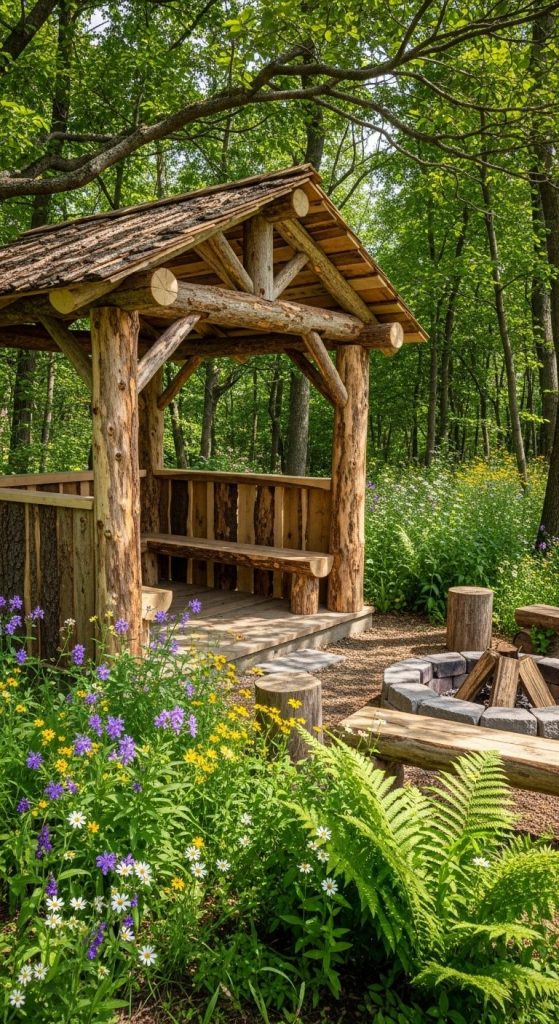
If you love mountain-lodge aesthetics, a log-style gazebo made from reclaimed or raw timber brings that wild, cozy feeling right to your backyard. It pairs perfectly with gravel paths, wildflowers, and stone firepits.
Pros:
- Strong, durable, and full of texture.
- Perfect for woodland or country gardens.
- Low maintenance once sealed.
Cons:
- Bulky look doesn’t suit minimalist settings.
- Logs may split naturally over time.
This design celebrates imperfection — every knot and grain tells a story. It’s rugged comfort done right.
4. Octagonal Gazebo — The Traditional Showpiece
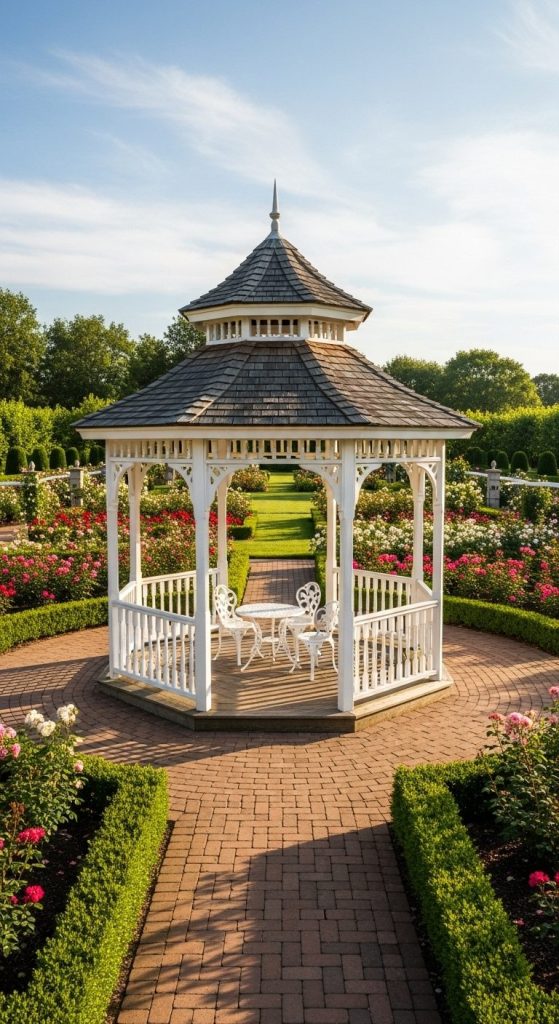
There’s something charmingly formal about an octagonal gazebo. With its symmetrical shape and open sides, it feels like it belongs in an English manor garden or a lakeside park. Add a shingled roof and railing for that picture-perfect look.
Pros:
- Iconic and elegant silhouette.
- Great airflow from all sides.
- Ideal for weddings or entertaining.
Cons:
- Complex geometry means higher build cost.
- Needs level ground for symmetry.
Octagonal gazebos never go out of style — they’re the architectural equivalent of a tailored suit: timeless and flattering everywhere.
5. Pergola-Style Wooden Gazebo — Airy and Adaptable
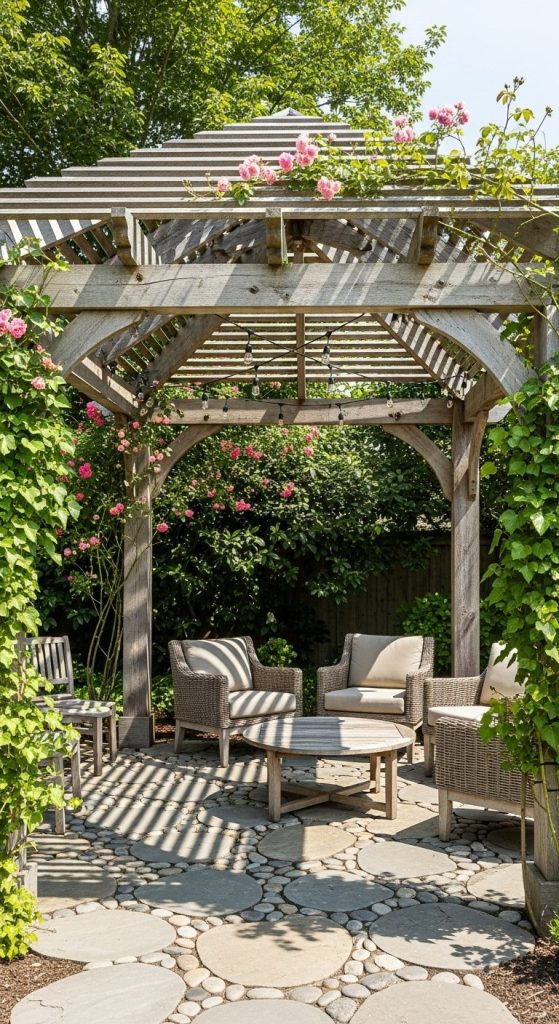
Want something lighter than a fully roofed gazebo? A pergola-style structure gives you shade without closing off the sky. It’s perfect for vines, climbing roses, or string lights.
Pros:
- Lets sunlight and breezes through.
- Easier DIY project compared to full gazebos.
- Customizable with plants, drapes, or lighting.
Cons:
- Limited weather protection.
- Needs solid anchoring against wind.
Pergola gazebos hit that sweet spot between structure and freedom — a favorite for relaxed, modern gardens.
6. Wooden Gazebo with Curtains — Private Paradise
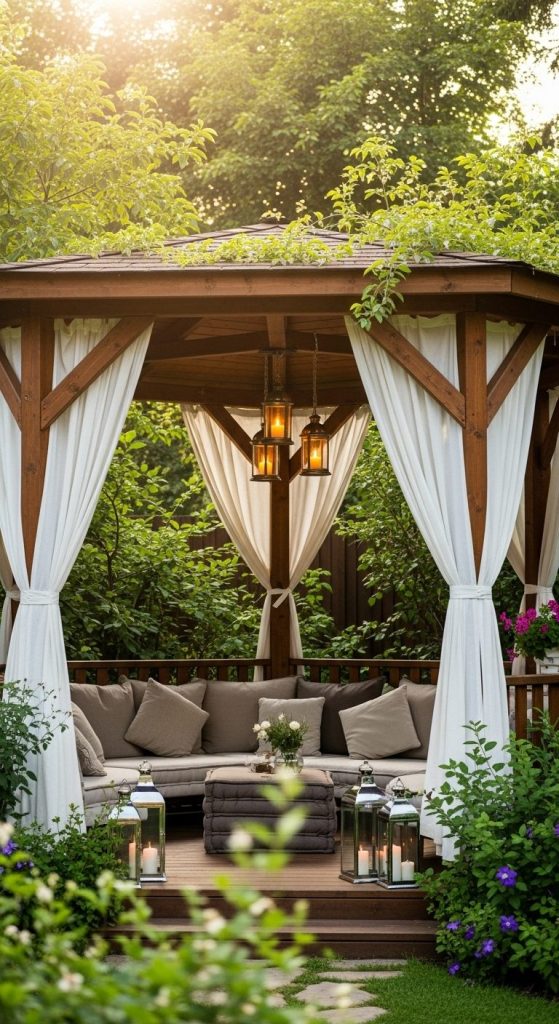
If you crave a cozy outdoor escape, add flowing curtains or sheer drapes to your wooden gazebo. It instantly transforms into a romantic, resort-style retreat — perfect for lounging or afternoon naps.
Pros:
- Provides shade and privacy.
- Adds softness and visual interest.
- Easy to swap fabrics seasonally.
Cons:
- Fabrics need weather-resistant treatment.
- Curtains can get tangled in wind.
There’s a quiet luxury in soft fabric fluttering around solid timber — elegance and comfort in perfect harmony.
7. Gazebo with Built-In Seating — Smart and Social
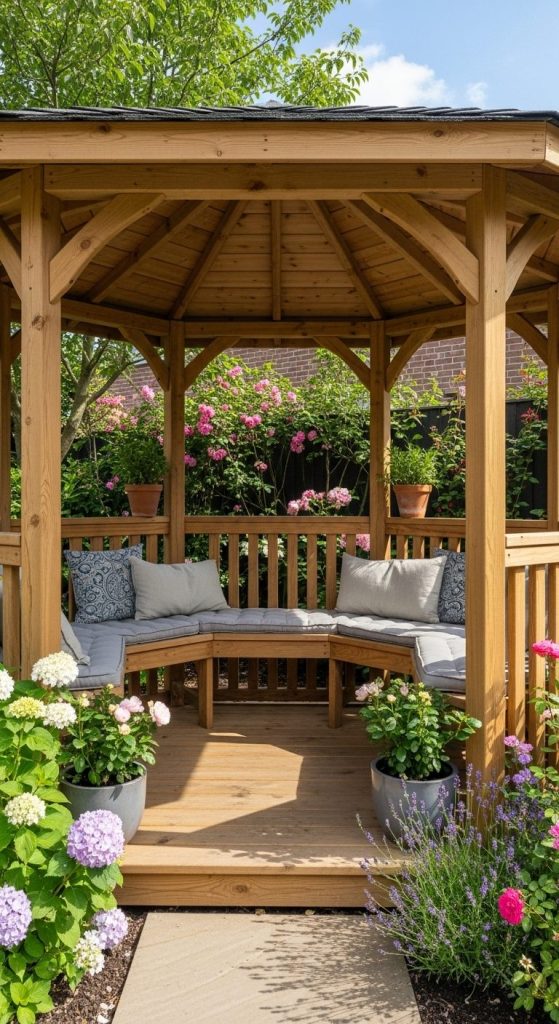
Built-in benches around the interior make your gazebo instantly functional and space-efficient. It’s a clever touch for small backyards or family spaces.
Pros:
- Saves on outdoor furniture costs.
- Maximizes seating capacity.
- Keeps design cohesive and clean.
Cons:
- Fixed seating means less flexibility.
- Needs cushions for comfort.
In compact gardens, this design is genius — it’s like a built-in invitation to gather and linger.
8. Raised Platform Gazebo — Elevated Perspective
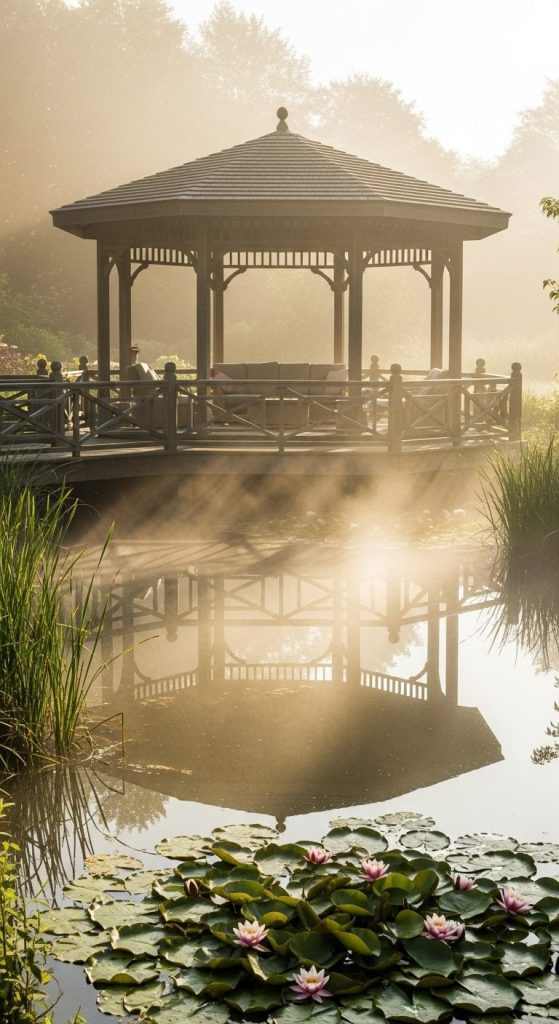
A gazebo on a wooden deck or platform adds drama and improves drainage. The elevated view gives your garden a cinematic feel — especially if you position it near water or overlooking flower beds.
Pros:
- Protects structure from damp soil.
- Creates a visual focal point.
- Ideal for uneven landscapes.
Cons:
- Requires railings for safety.
- Adds construction complexity.
A raised gazebo feels like a stage for life’s quiet moments — sunsets, coffee rituals, or simple stargazing.
9. Lattice-Walled Gazebo — Pattern and Privacy

For a gazebo that feels airy but still enclosed, lattice panels are perfect. They create dappled light and visual intrigue while letting breezes drift through.
Pros:
- Balances openness and privacy.
- Great for climbing plants and vines.
- Adds texture to plain wood designs.
Cons:
- Requires cleaning to prevent mildew.
- Can feel too enclosed in small yards.
The lattice look strikes a beautiful middle ground — a little mystery, a little sunlight, and a lot of charm.
10. Modern Flat-Roof Gazebo — Sleek Simplicity
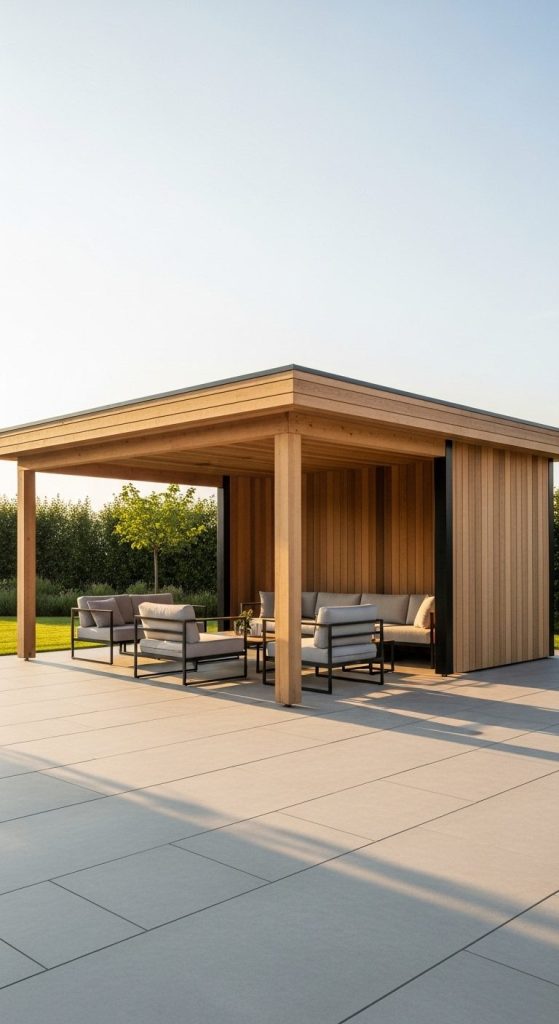
If your home has modern architecture, a flat-roof gazebo with clean lines and minimalist detailing keeps everything cohesive. Use hardwoods like ipe or thermowood for a high-end finish.
Pros:
- Contemporary and stylish.
- Works with lighting, fans, and decor easily.
- Great for decks and urban gardens.
Cons:
- Needs proper drainage for rain runoff.
- Minimalist designs show wear easily.
Modern gazebos prove that simplicity isn’t boring — it’s bold, confident, and quietly luxurious.
11. Hexagonal Wooden Gazebo — Compact and Charming
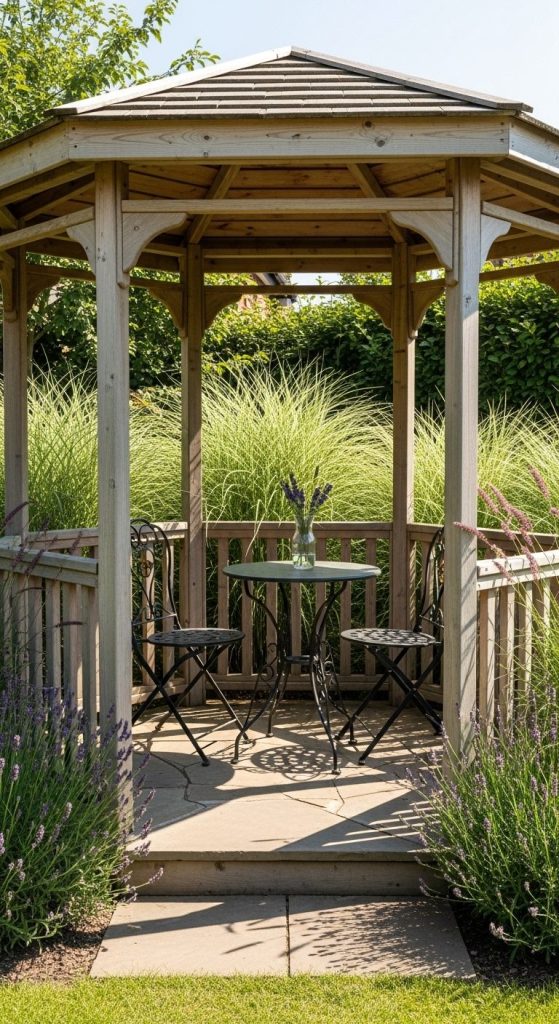
The hexagonal shape offers a cozier version of the classic octagon. It fits snugly into corners or smaller gardens without losing presence.
Pros:
- Unique shape with strong geometry.
- Efficient use of space.
- Excellent airflow and visibility.
Cons:
- Custom roof panels increase cost.
- Not ideal for large dining sets.
It’s a perfect example of “small but mighty” design — structure meets style in perfect proportion.
12. Gazebo with Fire Pit — Year-Round Enjoyment

Want to stretch your outdoor season? Add a built-in or portable fire pit under a ventilated wooden gazebo. It’s cozy, dramatic, and makes chilly nights magical.
Pros:
- Extends outdoor use into colder months.
- Creates ambiance and warmth.
- Great for gatherings or solo relaxation.
Cons:
- Requires careful ventilation and spacing.
- Not all woods tolerate heat well.
A gazebo with a fire pit feels like a mountain retreat — proof that warmth isn’t just physical, it’s emotional too.
13. Green Roof Gazebo — Nature on Top

For eco-conscious gardeners, a living roof turns your wooden gazebo into a miniature ecosystem. Sedums, mosses, or wildflowers thrive on top, softening the structure and cooling the air.
Pros:
- Environmentally friendly and biodiverse.
- Natural insulation keeps shade cooler.
- Stunning, organic appearance.
Cons:
- Needs waterproofing and structural reinforcement.
- Maintenance required for plant health.
It’s a blend of architecture and ecology — your gazebo literally grows into the garden.
14. Open-Air Dining Gazebo — Alfresco Elegance

A dining gazebo transforms every meal into an event. Imagine candlelit dinners under timber beams and twinkling fairy lights — all sheltered from dew and wind.
Pros:
- Creates a dedicated outdoor dining zone.
- Adds value and functionality to the garden.
- Perfect for entertaining guests.
Cons:
- Requires a larger footprint.
- Needs lighting and table clearance.
A dining gazebo feels like an outdoor room — where great food and great conversations never have to end.
15. Gazebo with Climbing Plants — Nature’s Canopy
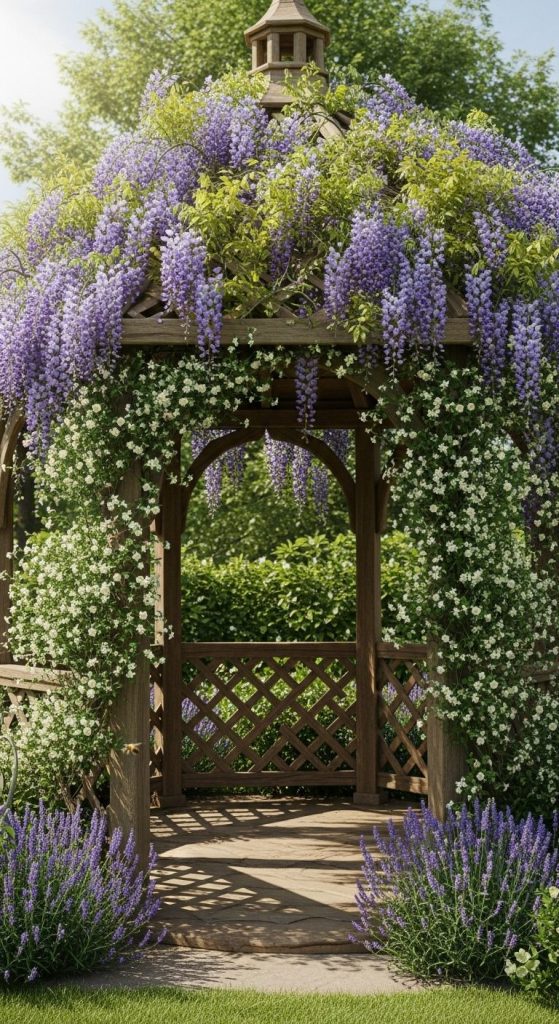
Few things are as enchanting as a wooden gazebo draped in wisteria, ivy, or jasmine. The blend of architecture and greenery turns any space into a living sculpture.
Pros:
- Natural shade and fragrance.
- Enhances visual softness and romance.
- Supports pollinators and wildlife.
Cons:
- Plants take time to mature.
- Requires pruning and upkeep.
This is where wood and nature meet in perfect partnership — your garden grows around you, literally.
Conclusion
Wooden garden gazebos are proof that structure and soul can coexist. From minimalist platforms to vine-covered hideaways, they add both function and poetry to outdoor spaces. Each design reflects a different personality — whether you lean toward rustic comfort, architectural precision, or dreamy romanticism.
The best gazebo isn’t the biggest or the most expensive — it’s the one that fits your rhythm. Maybe it’s where you sip morning coffee, share stories, or simply listen to the wind in the leaves. Whatever your choice, a wooden gazebo reminds you to pause and be present. After all, great gardens don’t just grow — they host memories.

William Martin is a passionate bowler who spends most of his weekends playing the sport. With years of intense experience under his belt, William decided to share his knowledge by creating BOWLING OCEAN. Join me on this journey to explore the world of bowling and discover the tips and tricks to becoming a pro.



